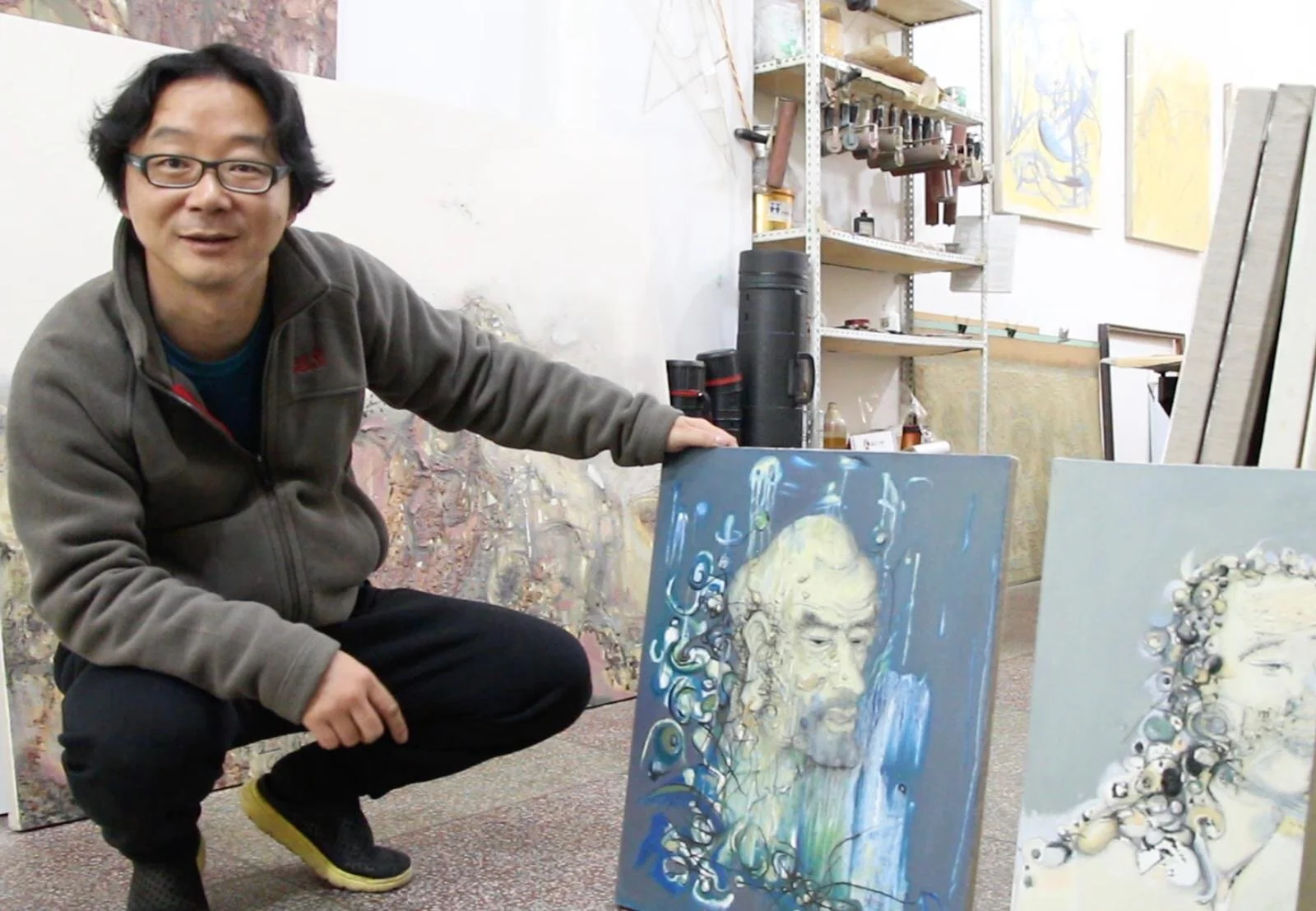CHEN LI — INSPIRATION FROM THE SILK ROAD
“Human Buddha” series
“Chen Li is a master oil painter and woodblock printmaker whose work is in The British Museum permanent collection where it was displayed as an exceptional example of Modern Chinese art. Today we dive into the inspiration behind one of his series of paintings - the Human Buddha.”
““These paintings are my footprints. Footprints of my travels to temples with Buddhist sculptures and murals. From childhood, I have seen and internalised many Buddhist images ... This is my expression of these impressions.””
Image above: Chen Li, Yunnan Buddha, private collection
“Chen Li’s native Yunnan Province lies on the Silk Road whose vast series of ancient routes from the Mediterranean to China has long captured imaginations.
There is one place along the route, however, that is particularly special. An extraordinary network of caves housing a millennia of Buddhist murals in an ancient oasis town between two deserts ...”
“On the edge of the Gobi desert are the fascinating Mogao caves, or the Caves of One Thousand Buddhas. Over 500 cave temples were carved into rock cliffs from the 4th to the 14th centuries and over a period of 1000 years decorated with stunning wall murals depicting scenes from religious scriptures, history, and mythology.”
Above: Boddhisatvas, Mogao cave murals, Yuan Dynasty
In ancient times, the nearby town of Dunhuang was a thriving oasis where for centuries travellers from near and far stopped before undertaking the perilous journey through steep mountain passes and scorching desert. The murals are a time capsule of the mix of artistic styles and schools of Buddhism over a millennia.
“One aspect of the Mogao murals that immediately grabs attention is the harmony and vibrancy of colours.
This especially appeals to Chen Li, whose talent for creating harmonious lines and colours was influenced by his father, Chen Yongle, a renown artist whose woodblock prints and ink paintings rendered in the “Yunnan School” style are celebrated in Asia.”
Above left: Boddhisatva, Mogao caves mural, Yuan Dynasty
Above right: Chen Li, Seated Human Buddha, 2015, oil on canvas,
90 x 70cm, £3,200
Colours in Buddhism
Yellow is symbolic of emptiness and the complete absence of form. In Tibetan Buddhism, yellow is the highest spiritual colour, representing humility and the renunciation of all desires, as well as spiritual abundance. It is the colour of the robes worn by Buddhist monks.
“Dynamic movement was another source of inspiration. Chen Li is known for his innovative expressive marks - the dynamic lines emanating from his creations like sparks of energy.
The detail and movement of some of the figures in the Mogao murals, such as the flying Apsara or nymph spirits, are fascinating to behold and could not help but appeal to Chen Li.”
Above left: Flying deity, or Apsarasa, Mogao caves mural
Above right: Chen Li, Blue Human Buddha, 2015, oil on canvas,
90 x 70cm, £2,900
Colours in Buddhism
Blue represents loving kindness and peace. In Tibetan Buddhism, it is also symbolic of tranquility, wisdom, ascension, purity, and healing.
“You may have noticed the joyful multi-coloured spheres swirling around the Human Buddhas’ heads. Besides philosophical connotations, some of the design influence comes from the fanciful headdress worn by nobility in Imperial China, such as this fine jade ensemble worn by King of Khotan’s daughter, depicted in the 10th century Mogao mural below.
It is also interesting to note the influence of colours. Chen Li’s harmonious palette resonates with a Tang Dynasty Mogao mural depicting two Buddha statues on a boat being welcomed by followers.”
Above left: Magao caves mural
Above right: Chen Li, Brown Human Buddha, 2015, oil on canvas
90 x 70cm, £2,900
Colours in Buddhism
Red symbolises achievement, wisdom, virtue, fortune, and dignity. In Tibetan Buddhism, red also represents life force, preservation, fire, and is associated with sacred objects and places.
““From childhood, I studied Chinese ink painting, calligraphy, colour theory, philosophy and poetry, as well as Western theories and oil painting. Now, I am re-examining [these concepts] from the standpoint of my own emotions, perceptions and cultural background … in search for new possibilities.
These Buddha paintings remind me that I have to give up something to create new things.””
“Chen Li’s art is a living art, constantly evolving. This excerpt from my 2016 interview with him perhaps sums it up best:
“Katrine Levin: Tell me something you don’t love, and why?”
“Chen Li: I don’t like Karaoke because you just repeat after others.””





















